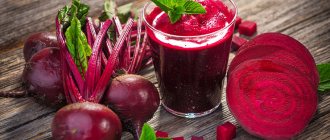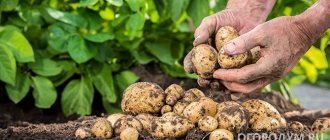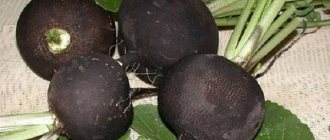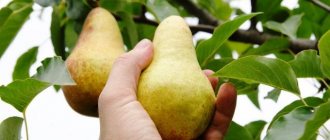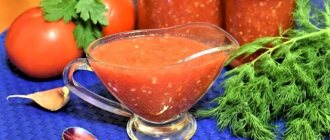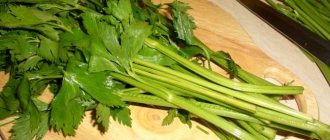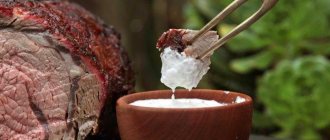Storage methods and locations
Owners of their own homes store horseradish in the cellar or basement. The apartment uses a dark, cool closet or refrigerator. Depending on the storage location, the method of processing the root crop is chosen.
Basement or cellar
In order for the roots to “survive” the winter well and not lose their spice and taste, you need to follow several rules:
- The horseradish is dried, cleaned of any remaining soil, and placed in wooden boxes in one layer so that there is space between the roots. Cover with sand a few centimeters. The sand is periodically sprinkled with water. Thanks to this, the root vegetable will retain its taste and aroma.
- Storing horseradish at home for the winter is possible in plastic bags. To do this, the roots are washed in water, thoroughly dried, placed in plastic bags or sacks and filled with air so that the container becomes airtight. With this storage method, the roots can last from 3 to 6 months.
- Root crops will remain fresh for a long time with the help of peat litter. To do this, prepared horseradish is placed in boxes and covered with peat. It prevents roots from rotting as it has an antibacterial effect.
Refrigerator and freezer
To store horseradish supplies in the apartment, use a refrigerator. For this:
- The roots are thoroughly washed and dried, wrapped in cling film or thick paper, several holes are made for air circulation and placed on the bottom shelf of the refrigerator. In this way, the harvest will last from 4 to 5 weeks.
- For longer storage, choose an airtight container. Then the shelf life of the product will increase to 3 months.
This method of stockpiling is chosen when the harvest is small, because containers take up a lot of space on the shelves of the refrigerator.
A great way to preserve horseradish for the winter is to freeze it. The roots are washed and dried, cut into circles or cubes. Place in a convenient container or bag and place in the freezer. In this way, the root crop can be stored for about a year.
Drying roots
This is an excellent way to harvest the roots of a plant if it is used to prepare various culinary masterpieces. Rejected roots are used for drying. Horseradish is peeled and cut into slices. The plates are laid out in one layer on a sheet and dried in the oven at 60 degrees for 1.5-2 hours. Dried horseradish is ground in a coffee grinder and the powder is poured into a spice jar. In this form, horseradish can be stored for about 2 years, but will not lose its taste.
Marinating horseradish
For this preparation, washed and peeled roots are crushed. You can grind horseradish at home using a grater, meat grinder or food processor. When ground, the roots release caustic substances that irritate the mucous membranes of the nose and eyes. Therefore, when using a meat grinder, put a plastic bag over the outlet hole.
The grated root is placed in clean, sterilized jars and filled with marinade. For the marinade you will need:
- 1 glass of boiling water;
- 1 tbsp. spoon of salt;
- 1 tbsp. spoon of sugar;
- 125 ml vinegar.
The jars are closed with lids. Most often, small jars are used to quickly use the product. If the jar sits in the open air for a long time, the specific taste of the roots will disappear. The shelf life of such preservation is 2-3 years.
The most beneficial properties of the roots of the plant are preserved only for the first day after its preparation. Over time, the benefits and severity will decrease.
Storage methods
Horseradish is stored using traditional and modern methods. The plant is distinguished by its great vitality, and its roots are able to germinate for several years. The most common method of preserving vegetables in winter is to store freshly harvested specimens in the cellar. But modern technology allows you to freeze and dry seasonings.
Fresh storage
Fresh horseradish in a warm room quickly begins to germinate. To do this, it does not need soil or other substrate, it does not need watering. All substances necessary for growth are stored in sufficient quantities in the rhizomes. As it grows, moisture and nutrition are consumed and the root crop loses its elasticity within about 30 days. Most often, horseradish can be preserved fresh only at low temperatures and high humidity.
In the cellar
It is most convenient to store horseradish in the cellar: the vegetable storehouse is adapted for storing such products. In the basements, the best temperature conditions are created to interrupt the growing season of plants: low, but not negative values do not allow vegetables to freeze, but also do not provoke germination. Humidity of about 70% helps stop evaporation and preserve the succulence of the roots.
To prevent horseradish from wilting during prolonged exposure, it is better to place the prepared rhizomes in damp sand or sawdust. This way the vegetable can lie until mid-summer without losing its qualities.
Cold storage
If there is no cellar, refrigeration equipment is often used as vegetable storage. The most suitable conditions for vegetables are in lower containers. But storing horseradish in the refrigerator is more difficult than carrots or beets: temperatures around +5°C are too high for it. Approximately in the middle of winter, fresh roots laid for overexposure begin to sprout.
Germination activity can be reduced by cutting off the upper part of the rhizome with the growing point. The cuts practically do not spoil (the juice contains natural antibiotics), but to better preserve the moisture inside, it is better to dry the cut roots before putting them in the refrigerator for 1-2 hours. After this, the rhizomes are placed in a plastic bag, several holes are pierced in it, and the neck is closed. Simply place the package in a vegetable container next to carrots and other root vegetables.
Freezer storage
Frozen roots, after thawing, lose some of their juice and become flabby. They are difficult to grate if you require crushed spices. But both small and large roots are suitable for frozen storage.
Before freezing horseradish, root vegetables should be completely cleaned: wash away any remaining soil, remove the skin and fibrous layer. After this, the rhizomes are cut into convenient pieces 2-3 cm long or into rings 1 cm thick (depending on the size of the root). This preparation will allow the vegetable to freeze quickly without the formation of large ice crystals. Spread the prepared horseradish in a thin layer on a baking sheet and place it in the chamber, turning it on to maximum cold or fast freezing mode. After freezing, the horseradish can be poured into a bag and stored in normal chamber mode.
Before preparing sauces or seasonings, half-thawed pieces are passed through a meat grinder. If the vegetable is frozen in the form of segments 10-15 cm long, then it can be grated without preliminary thawing. Frozen roots can be stored for 6-12 months.
In pureed form
Fresh grated horseradish can also be frozen. This way it will not lose its sharpness, like prepared with sugar or another method. You can mix the mixture with additives after defrosting a small portion.
Both small and large specimens are suitable for storage in this way. They are washed, peeled and chopped on a fine grater. Due to the pungency of the vegetable, grating is often replaced by grinding in a meat grinder. You need to attach a plastic bag to its outlet hole in advance: this way the horseradish fumes will not irritate your eyes. You can store the ground mass directly in this bag, placing it in the freezer, but it is better to freeze horseradish for the winter in separate small containers. The shelf life of the product is up to 1 year.
As a dry spice
As for freezing, any roots that are not suitable for storing in the cellar are used for drying: small and damaged. Before drying them, you need to completely process the vegetable. The roots cannot be dried in the sun, and when processed in the shade the process takes a long time. Modern kitchen appliances help speed it up.
Washed and peeled horseradish is cut into thin slices or strips; you can chop it on a coarse grater. Drying is done as follows:
- In the oven. Preheat the cabinet to +50... +60°C, distribute the chopped roots on a baking sheet and place in the oven, leaving the door ajar to allow moisture to escape. Leave the horseradish for 2-3 hours, dry, stirring after about 30 minutes. If this time is not enough, continue drying at the same minimum heat.
- In the vegetable dryer. Preheat the device to +40°C. Place the baking sheet in the chamber and leave for 1 hour. Turn off the dryer and let the vegetables cool. Repeat the heating and cooling cycle 1-2 more times.
The readiness of dried horseradish is indicated by the fragility of the pieces. If they bend but do not become brittle, the drying process must be continued. Pour the prepared horseradish into a clean, dry jar with a lid and store in a dry, dark place at room temperature. To prepare the seasoning, you can grind it in a coffee grinder and then steam it with boiling water. When adding to hot dishes, use dry or soaked pieces without grinding.
How to store horseradish in the refrigerator
City residents can use a regular refrigerator to store roots, because it maintains a stable temperature and humidity, which prevents the vegetable from spoiling (Figure 4).
After harvesting, you need to carefully inspect all the roots, since only vegetables without rot or signs of mechanical damage should be placed in the refrigerator. Next, the vegetable needs to be slightly dried and cleaned of any remaining soil, but not washed. After this, the roots are wrapped one by one in cling film and several holes are made in it for air circulation. In the future, the harvest prepared in this way can be stored in the bottom drawer of the refrigerator.
Figure 4. Preparing roots for storage in the refrigerator
As a rule, with proper preparation, the roots will be stored in the vegetable section of the refrigerator for up to three months. But, if you want to keep the vegetable fresh for a longer time, it is better to use the freezer. To do this, the roots are cleaned, washed under running water and dried. Next, they need to be cut into small cubes, placed in containers or special freezer bags, and placed in the freezer. In this case, the shelf life of the vegetable will be about six months. However, it should be borne in mind that after defrosting, horseradish will lose its pungency.
Storing the whole root
Despite the fact that many tasty and healthy preparations can be prepared from horseradish, it would be more logical and correct to store the whole roots.
To do this, you can use one of the following methods:
- Basement or cellar: the easiest way to store vegetables is in boxes with clean sand. First, the bottom of the container is sprinkled with sand, and then the roots are laid out in it, trying to place them so that the roots do not touch. Each layer is sprinkled with a small layer of sand. In addition, horseradish can be stored with carrots. With this proximity, both vegetables will not rot and lose moisture.
- On the balcony: in urban environments, the easiest way to keep the root fresh is on a glassed-in balcony. The principle remains the same as when placing in the basement, that is, the roots should be placed in boxes with sand.
- In the refrigerator: to ensure a long shelf life (about 3 months), it is better to wash the roots, peel them, put them in sealed bags and place them in the lower compartment of the refrigerator. If you have not peeled the vegetable, the storage period will be only 4 weeks.
With a wide variety of ways to store whole horseradish, many housewives still prefer to chop it for freezing or preparing savory snacks for the winter.
How to store leaves
Not only the roots, but also young horseradish leaves can also be stored in the refrigerator. Rinse the leaves under running water, dry them so that there is not a drop of moisture on them, and then put 1-2 leaves in bags. Place the bags in the refrigerator. In it, greens can remain fresh for about 3 weeks.
You can also freeze horseradish leaves in the freezer to keep them fresh even longer. Prepare them in the same way as in the previous case and put them in the freezer. Take them out as needed and use them without defrosting.
Another way to preserve horseradish leaves is drying. Wash the leaves under running water and place them in a warm oven to dry. When they are dry, grind them into powder and pour it into dry jars. Shelf life: at least 1 year.
Preserving horseradish for the winter is quite simple. Use any of the proposed methods, and you will always have roots or leaves of this vegetable on hand, even when it is frosty outside.
Selection and sorting of raw materials
You should dig up horseradish from the autumn harvest, and, accordingly, go to the market for a supply in mid-October or early November. Root crops collected after this period lose their juiciness. As a result, not only the taste of the product suffers, but also its keeping quality; such fruits dry out faster during storage. When purchasing horseradish, you should ask the seller to allow you to break one root - if it is brittle, it means that the root crop was left in the ground.
For culinary purposes, the roots of three-year-old plants are best suited: young horseradish does not have the required “hotness,” and old fruits become tasteless and acquire an excessively fibrous, “woody” structure. The root of the required age is about 2 cm in diameter.
You need to carefully remove horseradish from the soil so as not to cut it. The cut sites will open the fungi into the fetal tissue, which can lead to rapid spoilage of the product.
For long-term fresh storage, only healthy, succulent roots that are not affected by pests or diseases should be left. The pulp of the root vegetable should have a uniform white color, and the skin should have an even and light yellowish tint. There should be no traces of impacts, cracks, signs of rotting or mechanical damage on the surface of the fruit.
Preparing horseradish for storage
In order for horseradish to remain fresh and aromatic for a long time, you need to know the basic rules of preparation. Depending on the variety, the period of full ripening of the plant may end in spring or autumn, then it is time to dig the plants out of the ground and send them for storage or processing.
It is recommended to choose dry weather for harvesting plants. Care should be taken while working so as not to damage the integrity of the plant root. After digging up the horseradish, you should shake it off the ground, cut off the foliage and inspect it to identify damaged, rotten or spoiled root crops.
Only whole healthy roots are suitable for fresh storage, which should be dried in a dry, well-ventilated place and stored in a permanent place of storage. You can treat the cut from the leaves with an iodine-based solution to make it last even longer.
Storage errors
Storing horseradish has several nuances, ignorance of which can ruin the stock. The most common mistakes:
- Sun drying. Horseradish should not be kept in direct sunlight even for a short time; moreover, it is not recommended to dry the raw material in this way. After digging, horseradish should be dried outdoors in the shade or indoors.
- Waterlogging of sand for storage. If the sand in the box is wet, the root crop will quickly rot. The sand should be slightly damp, crumbling when squeezed into a handful.
- Freeze large portions. A frozen product retains its taste well, but it should be defrosted once. This applies to both fresh roots and horseradish sauce. Therefore, you need to freeze in small portions in order to consume the contents of the package at a time.
- Wet the root before drying. Drying involves washing the horseradish roots, but you need to wash it as quickly as possible so that the fibers of the fruit do not absorb excess moisture, otherwise the raw material will become moldy.
- Powder dampening. Dry horseradish, like other spices, should be kept at a humidity of no higher than 75%. Dampness is fraught with the appearance of mold and spoilage of the product.
Each method of storing horseradish has its drawbacks, but their variety allows you to choose the most convenient option. Horseradish is harvested twice - in autumn and spring, so even a small supply that the freezer can hold will be enough to provide the table with a healthy and tasty addition to the main diet until fresh root vegetables appear on the markets or in your own garden beds.
Fresh storage
You can store the root vegetable without processing for up to 1.5 years, but only the first 4-5 months will horseradish have all the taste qualities of a fresh product.
Raw materials that have been stored longer than this period lose their pungency and some of their beneficial substances. The horseradish harvest should be removed to a permanent storage location as soon as possible, since it is harmful for vegetables to be exposed to dry, open air. It is optimal to dry the root crop for 24 hours at room temperature, and then send it to storage. Do not drop or hit the fruits or leave them in direct sunlight. You should also not wash root vegetables; just shake off any remaining soil from them. The leaves should be cut off immediately after digging and the “wounds” should be treated with iodine.
Premises requirement
You can keep horseradish fresh for a long time in a cold, dark room with high humidity. As a rule, a cellar or basement is used. A glazed balcony with little sunlight is also suitable, but with the arrival of frost you need to remember to wrap up some supplies.
Optimal conditions:
- Temperature range from 0 to +2°C. The maximum permissible value is +5°C; at high temperatures, the shelf life of the product is reduced to a month.
- Air humidity – 85-90%. In dry air, horseradish root dries out; at higher levels, the raw material is likely to rot.
- Darkness. Under the influence of sunlight, the root loses most of its beneficial substances, primarily phytoncides evaporate.
The room intended for storing horseradish must be clean and disinfected. A quick and reliable way to remove fungi and pest larvae is fumigation with sulfur, but the procedure can only be carried out in storage facilities remote from residential premises (not in a closet or on the balcony of a city apartment). It is necessary to burn sulfur with closed doors at the rate of 1 kg of substance for every 1 m3 of room. After fumigation, the cellar or basement must be thoroughly ventilated; vegetables can be placed in storage after 2 weeks.
Storage methods
Fresh horseradish can be preserved without processing in several ways:
In sand. As containers for storing horseradish, you will need wooden boxes, the bottom of which should be covered 8 cm with clean and damp sand. Horseradish roots should be placed on top of the sand in one layer. Root crops should be laid so that they do not touch each other, this will reduce the risk of rotting. It is advisable to maintain a distance of 3-5 cm between vegetables. Horseradish should be sprinkled with damp sand in a 4 cm layer. If the height of the box allows, you can store several levels of root vegetables in it.
In buckets. Horseradish roots need to be stuck vertically into moistened sand in a bucket or other container, keeping a distance between them. The method is not practical when storing large stocks. In bundles. Horseradish can be kept in bunches of 2-3 roots, hanging them from the ceiling. The method is not the most successful, since the root crop does not have the protection that sand provides from excess moisture or dryness in storage. In a refrigerator. The method limits the volume of the stock; the freshness of the root crop can be preserved for no more than 3-4 weeks. The preparation is somewhat different: the fruit must be thoroughly washed under running water and dried for 2 days at room temperature. After this, the roots are placed in a plastic bag. It is advisable to wrap each root vegetable separately from the others.
It is important to ensure the packaging is airtight, so cling film is the best option. You should keep the supply on the bottom shelf of the refrigerator.
The preservation of horseradish is not affected by its proximity to other vegetables.
Horseradish stock should be checked periodically. If some of the root crops rot, the affected fruits should be disposed of, the rest should be treated with antifungal drugs. If the cellar is dry, you need to moisten the sand in a box or bucket with water from a spray bottle every month. The same measure can be used if the crop begins to dry out.
How to preserve horseradish for the winter
To preserve root vegetables for a long time, you must adhere to certain rules: temperature and humidity conditions, place, time and method of storage.
Horseradish can be stored fresh, frozen, dried or processed.
Fresh storage
To preserve the freshness and aroma of roots at home, you can use practical tips.
These methods will help preserve the crop for a long time.
Storage in a basement or cellar
For housewives of country houses, the following method of storing horseradish in a basement or cellar is suitable:
- In sand. To do this, the roots are cleared of the soil and placed in boxes with sand so that they do not come into contact with each other. Each row is covered with a layer of 3 cm. For long-term storage, the sand must be moistened from time to time using a spray bottle. The optimal air temperature should not fall below 0 degrees, and humidity should be within 80-90%.
- In plastic bags. For this method, the roots are immersed in cold water and washed thoroughly. Next, place on a paper towel and dry. Prepared root vegetables are placed in bags and filled with air. This airtight packaging will allow you to preserve horseradish until spring.
- In the peat. Vegetables are placed in boxes in rows, each covered with a 4-5 cm layer of peat. This method is very popular, since vegetables in peat do not rot and can withstand slight frosts.
- In limbo. The rhizomes are collected in a bunch of several pieces and suspended from the ceiling, making sure that there is no contact with other objects. When using this method, it must be remembered that high humidity can lead to rotting, and low humidity can lead to drying out of the root.
These methods can also be used in apartment conditions, placing the boxes on a glazed balcony, covering them with a blanket in severe frost.
The freshness of horseradish will only be preserved in a well-ventilated room.
Storage at home
Any housewife wants to preserve the harvested crop for as long as possible. But what to do if there is no cellar or basement? The refrigerator comes to the rescue.
Only healthy root vegetables can be frozen.
There are two storage methods:
- On the bottom shelf of the refrigerator. Each root, cleaned of dirt, is wrapped in film with small holes and put into the vegetable compartment. The rhizomes can also be placed in plastic bags. In this state, freshness can be preserved for 30 days. If you have an airtight container, the shelf life can be extended by another 3 months.
- In the freezer. This method is used for longer storage of roots. To do this, they are washed and peeled. You can cut each root into portions, place it in one layer on a baking sheet and quickly freeze it. In frozen form, the product is packaged in bags and sent back to the freezer and kept there. This method has many advantages: long shelf life, space saving, availability at any time. In addition, seasonings and sauces made from frozen product are no different from those made from fresh root.
.
Dry
The ideal way to store horseradish. When dried, the root vegetable retains all its beneficial properties and is ideal for making soups, sauces and seasonings.
You can use rejected roots that are unsuitable for fresh storage. For this:
- clean root vegetables are grated on a medium grater or cut into thin strips;
- Place the prepared product on a baking sheet covered with parchment paper;
- the baking sheet is placed in the oven, heated to 50 degrees;
- After complete drying, grind the horseradish in a blender until it becomes powdery.
You can dry horseradish in an electric dryer or in the sun, but natural drying will take more time and effort.
The dried root is placed in clean glass or plastic jars and stored in a dark, dry place. If you follow the rules of care, you can store it for two to three years.
Storing horseradish in winter: features
If you don’t want to take up space in the refrigerator or you don’t have time to dry or freeze horseradish, you can always keep it fresh in the basement, especially since this method is considered the simplest and most effective.
Despite the fact that horseradish is an unpretentious crop, both in terms of cultivation and storage, this does not mean at all that when planting it in the basement one should not adhere to certain recommendations. Next, we will look at the main nuances that need to be taken into account when storing in a basement or cellar.
Preparing horseradish
In order for horseradish to be successfully stored throughout the winter, it must first be collected correctly. Harvesting can be done in spring or autumn, depending on the variety grown. But, since many summer residents grow this vegetable in their garden by itself, it is better to collect it in the fall.
The rhizomes are carefully removed from the soil, trying not to damage their surface. After this, you need to lightly shake off the excess soil from the vegetable. It is not recommended to wash a vegetable that will be stored in a cellar, since in such rooms the vegetable is much better stored in a natural earthen coma (Figure 2).
Figure 2. Harvesting and preparing crops for storage
When the crop is harvested, you need to remove the remaining leaves and treat the cuts with iodine so that fungi or pathogenic microorganisms do not penetrate inside the root. After this, the vegetable is dried in a warm, well-ventilated area for 24 hours. Next, the roots need to be sorted: only high-quality roots without signs of mechanical damage or rot are suitable for storage in the basement. It is better to immediately send affected specimens for recycling.
Cellar storage
Despite the fact that there are many modern storage methods, the most effective option is still considered to be planting roots in a basement or cellar (Figure 3).
To successfully preserve the root in the basement throughout the winter, you need not only to properly prepare the harvest, but also take care of the arrangement of the room in advance. First, you need to thoroughly clean the basement: remove all plant debris, whitewash the walls and ceiling with slaked lime, and disinfect drawers, racks and shelves. Treatment with a smoke bomb is considered an effective way to disinfect a cellar, but it should be borne in mind that after such treatment, any vegetables, fruits, roots or preparations cannot be stored for two weeks.
If you have already prepared the basement, you can proceed to planting the vegetables directly:
- Prepare in advance the required number of wooden boxes in which the roots will be located.
- At the bottom of the containers you need to pour a layer of earth, sawdust or dry sand, and then lay the roots in one layer so that they do not touch each other.
- Next, we continue to lay the vegetable in layers, sprinkling each with sawdust or sand.
If you are storing a root dug up in the spring, it is advisable to sprinkle it with slaked lime. This is necessary so that the roots do not begin to produce young shoots.
During storage, the vegetable must be inspected periodically. All damaged or rotten specimens must be removed immediately, as they can lead to damage to the rest of the crop. If you notice that the roots have become too dry, just add a little damp sand to the box so that the moisture does not begin to leave the vegetable and it does not become flabby.
Figure 3. Options for storing whole roots in the cellarThere is another way to store the root in the basement or cellar without using a box of sand. To do this, dried and unpeeled roots need to be tied into small bunches and then hung from the basement ceiling. Unfortunately, with this method of storage, the roots quickly lose moisture and dry out, but if you plan to leave a small amount of this vegetable for the winter, this method will be quite acceptable, especially since it saves space in the basement.
How to store in a cellar, basement
The best way to preserve the freshness, benefits and pungency of aromatic roots is to store them in a cellar or basement. The storage should be pre-prepared by disinfecting the shelves and walls with a solution of bleach, copper sulfate or sulfur bomb.
Optimal storage conditions in the cellar:
- humidity 85-90%;
- good ventilation;
- temperature background 0-2 °C.
Wooden boxes and clean, damp sand, perlite or vermiculite are suitable for storing horseradish in the cellar (see “5 reasons to use perlite and vermiculite for winter storage of vegetables, fruits, rhizomes, tubers and bulbs”):
- Place a layer of filler at the bottom of the container.
- Form the next layer from selected unwashed roots, which need to be laid out at some distance from each other.
- Fill the box in layers so that the filler is on top.
The roots will remain fresh for 10-12 months, just periodically inspect them to remove spoiled specimens and moisten the substrate with a spray bottle once a week.
If a box is not found, you can similarly form a pyramid directly on the floor of the cellar. Also, an alternative to boxes is a bucket filled with garden soil. The soil should be slightly moistened and the roots should be buried at a distance from each other. The storage technology is identical.
Place the fragrant roots in the same box with the carrots. Phytoncides will protect carrots from spoilage.
Tips for Cleaning and Grinding Roots
My dear readers, many people think that there is no need to peel off the top layer to the white pulp. It is advisable to do this so that later you can simply get a clean product and use it for its intended purpose. You can remove the thin skin with a knife, a wire brush, or use a mini car wash.
Cleaning with a knife
Wash the root vegetable under running water with a kitchen sponge. Then I clean off the top layer with a sharp knife, the waste flies off like small shavings.
Cleaning the roots with a steel wool
A steel wool is convenient not only for cleaning dishes, but also for peeling off the thin skin of the roots. To do this, I use a stiffer brush, which I don’t mind throwing in the trash later. To make cleaning easier, I soak horseradish root in water for a couple of hours. Then I take it out and remove the top layer with a washcloth.
The simplest method of cleaning horseradish
Dear housewives, you can use a mini car wash. Place the roots in the mesh; water under pressure from the device will not only wash away the remaining dirt, but also remove the thin skin like shavings.
Watch the video on how to properly wash horseradish:
Methods for preparing canned horseradish for winter storage
There are many methods of preservation, but the simplest recipes are: horseradish with vinegar, citric acid, vegetable oil and honey. You can cook horseradish or adjika. I offer you a classic recipe.
Horseradish with vinegar
- take 500 g of peeled roots and grate or chop with a meat grinder;
- Pour 400 ml of water into a bowl, add 3 tbsp. l. vinegar (9%), 2 tsp. salt and 3 tsp. Sahara;
- Place the grated root vegetable in a bowl and stir, place in convenient glass jars and close tightly with a lid.
Author's note Natalya Papanova Blog author
Store horseradish and vinegar in the refrigerator for no more than a month.
With citric acid
Take the same amount of ingredients as in the previous recipe. Just replace vinegar with citric acid at the rate of: 1 tsp. at 14 st. l. water.
With honey
You can prepare horseradish in another way by replacing sugar with honey. This remedy helps fight sore throat, fever and cough.
If you don’t want to be treated with evil horseradish, try growing lemon balm in a pot to make a healing and aromatic tea.
All you have to do is add honey and the medicine is ready
With sunflower oil
You can use vegetable oil as a preservative by adding it before closing the jar with horseradish.
Where to store horseradish in jars
There are many recipes for processing horseradish that allow you to fully use it. Salting and marinating will take time, but the beneficial substances will last longer.
Preparing horseradish in jars for the winter
Option 1
To prepare twisted horseradish in jars, take: 250 ml of water, 1 tbsp. l. sugar and salt.
- peel and chop 1 kg of horseradish;
- boil water, add sugar and salt;
- add the grated roots, stir;
- place in jars with nylon lids.
The product is stored at a temperature no higher than +5 degrees for 1-2 months. Before serving, dilute with sour cream in a 2:1 ratio.
To preserve it for a longer period, add 125 ml of apple cider vinegar to the base and only then the twisted horseradish itself. When preparing this way, jars should be sterilized, filled and closed with tin lids.
With this preparation, the shelf life of the product reaches several years.
Option 2
To prepare a seasoning based on horseradish (horseradish), add to a volume of 200 g: salt 1 tsp, sugar 1 tbsp, wine vinegar 7 tbsp, ground beets 1 pc.
- chop the roots (preferably juicy and thin);
- Divide the resulting liquid slurry into jars and place in the refrigerator.
The shelf life reaches 3-6 months.
Maintain a power of 600-700 Watts, otherwise hard rhizomes will not be able to turn. When handling, protect your eyes, nose, and respiratory tract.
Horseradish with beets
In order to preserve the properties and taste of horseradish for a longer period of time, housewives prepare a variety of homemade seasonings based on this vegetable, which can last in the refrigerator from several months to a year. One of them is horseradish twisted with fresh beets. Here is a successful step-by-step recipe for the preparation.
To prepare the seasoning, follow these steps:
- select thin juicy tubers;
- grind them using a grater or a meat grinder with small holes;
- to the resulting slurry, weighing 100 g, add ½ tbsp. l. sugar, ½ tsp. salt, 3 ½ tbsp. l. wine vinegar, 1 chopped medium beet;
- Divide the mixture into jars and cover tightly with lids;
- store the seasoning in the refrigerator.
The duration of preservation of the original taste of horseradish with beets reaches 6 months.
Storage after processing
There is not always a suitable room to keep horseradish fresh. In an ordinary apartment, you can make a stock from a recycled product.
Pickled horseradish
Canned horseradish can be stored for as long as possible – up to several years.
For preservation, it is advisable to dig up the roots immediately before the procedure. The fruits can be soaked overnight in cold water - the raw materials will be easier to grind. Before pickling, the roots must be thoroughly washed and cleaned. The peel should not be cut off, but scraped off with a knife. The peeled pulp should be grated on a fine grater or ground in a meat grinder. For 1 kg of crushed raw materials you will need:
- 250 ml water;
- 1 tbsp. spoon of salt;
- 1 tbsp. spoon of sugar;
- 125 ml apple cider vinegar (6%) or 1 tbsp. spoon of citric acid.
Boil water, dissolve salt and sugar in it. After removing from heat, add vinegar or citric acid. Pour the solution into a container with grated horseradish and mix well. Fill a sterilized jar up to the neck with the mixture.
It is important that there is minimal space left for air in the jar. Immediately after this, cover the jar with a lid and roll it up
Freezing
At subzero temperatures, the nutritional qualities of horseradish remain unchanged for 5-6 months. The defrosted product does not lose its taste, aroma and juiciness. In addition, the method allows you to preserve damaged raw materials; it is enough to trim off the affected areas, preserving the surviving pulp.
Before freezing, the root vegetable must be washed and peeled, then cut into 3-5 cm cubes or grated. Blot the raw materials with a paper towel to remove excess moisture, pack in a plastic bag and place in the freezer.
Before use, it is recommended to grate the cubes before they thaw. In this case, horseradish will not release substances hazardous to the eyes and nose.
Drying
The blank can be used for 1-2 years. Dried horseradish roots retain a pleasant aroma, but partially lose their taste.
You can dry horseradish naturally, but the process will take a long time, so you should use the oven. After peeling the root vegetable and cutting it (in halves, slices, or grated), you should place the raw material on a baking sheet in one layer. You need to place it in an oven already heated to +60°C and keep it at this temperature for about 40-60 minutes. After cooling, the horseradish slices can be crushed for ease of use - grate, pound in a mortar, grind in a coffee grinder.
Dried horseradish should be kept in containers made of natural materials, for example, in a linen bag. It is better to store the powder in a glass or ceramic container with a tight lid so that the aroma does not evaporate.
The preparation is well suited as a seasoning for first courses and making sauces. Before use, the product must be soaked in water for an hour.
Pounded horseradish
You can also save horseradish in the form of a ready-made seasoning. In the refrigerator, horseradish sauce is edible for 2 months, although it will be most delicious in the first 2-3 weeks.
The washed and peeled horseradish root should be minced in a meat grinder along with garlic, mixed with chopped tomato pulp and salt, sugar and spices added to the mixture. One part of horseradish requires 10 parts of tomatoes. The volumes of horseradish and garlic should be equal, but to increase the shelf life of the dish, the proportion of garlic can be increased. On average, for 2.5 kg of the finished mixture you need 2 teaspoons of salt and 1 teaspoon of sugar.
The mixture should be placed in a sterilized jar; for longer storage, you can roll up the jar of sauce as a preserve.
Methods of preparing for the winter
Vegetables supply our body with natural vitamins and minerals. Unfortunately, most vegetables lose their quality when stored for a long time at home. However, if used correctly, horseradish can preserve vitamins throughout the winter. The essential oils contained in it have antiseptic and antimicrobial properties. This is especially valuable in winter, as it allows you to quickly cope with colds and flu. Traditional medicine offers many recipes that use the grated root of this plant. Therefore, it is very important to protect the crop from damage.
Since it is, first of all, a vegetable, all the classic methods of preparing them for the winter are suitable. It can be stored:
- fresh;
- to freeze;
- dry;
- in various preserves.
Horseradish root is usually used as a hot, spicy seasoning. Add when preparing broths and main courses. Each method is discussed in more detail below.
Important! The antibacterial properties of horseradish essential oils are used for sore throats. It is rubbed and placed in a jar with a ground-in lid. After 15 minutes, open the jar and inhale the air deeply several times. The procedure can be repeated after a few hours.
How to prepare this root
To prevent it from losing its nutritional properties in winter, it can be stored in the cellar. You should choose the largest, whole roots, since any damage can lead to damage to the entire stock. The roots are carefully shaken off from soil and sand, the side appendages are cut off and bunches are formed, which are hung from the ceiling. Another option is storage in a box with sand. To do this, put the roots in a box and sprinkle each layer with sand. The roots should not touch. This method preserves the maximum amount of vitamins in vegetables, but not everyone has a cellar.
Important! The rhizomes in the cellar need to be sorted periodically. If you find rotten ones, they must be removed immediately.
Related article: The right wallpaper for a small kitchen: 6 basic recommendations
Almost all winter, horseradish preparation can be stored in the refrigerator. To do this, the roots are thoroughly washed with running water and the side shoots are cut off. Then they need to be dried thoroughly by laying them on a towel. Then place in plastic bags and seal tightly. You can check how tightly the bag is tied by pressing on it. If you don’t feel any air flow, then everything is done correctly. This vegetable should be stored in the bottom compartment of the refrigerator.
Important! For fresh storage, preference should be given to young roots, the length of which should not exceed 25-30 cm.
Freezing is a great storage method. It retains all minerals and vitamins in vegetables. Rhizomes also tolerate this type of treatment very well. They are washed, peeled and slightly dried with a napkin to remove excess water. Next, it is cut into large pieces, placed in bags and put in the freezer. When rubbed, the frozen spicy product does not sting the eyes. It can be stored this way for a year.
Drying roots for the winter
This vegetable can be dried. To do this, you need to wash the roots and remove the skin. Cut into thin slices and place on a wooden surface. Leave until completely dry. You can dry not only the roots, but also the leaves.
At the moment, special electric dryers have appeared. They retain more vitamins in vegetables and significantly reduce drying time. Horseradish leaves dried in this way will not lose their bright color and will impart spring freshness to the dish.
You can also dry the roots in the oven. To do this, they are cut into strips and laid out on a baking sheet in a thin layer. In electric ovens, set the temperature to +60 degrees and leave the roots to dry for 2 hours. Since it is impossible to set the exact temperature in gas ovens, you need to turn the fire to the lowest possible level and open the door slightly.
Dried horseradish can be conveniently stored in ground form. To grind, you can use a mortar, coffee grinder or blender. The powder does not take up much space and is very convenient to store. In ground form, it is prepared not only for the winter; this method will preserve the spice for several years. For further use, the powder must be poured with warm water; as soon as it gets wet, you can start cooking.
How to store grated root
Grated horseradish is widely used in winter preservation. It can be used both as a seasoning for pickling vegetables and for preparing savory snacks. Adding such an ingredient when pickling cucumbers will keep the brine clear and prevent mold from forming. To add a tart taste, plant leaves are added to marinades.
Related article: How to make a glass table with your own hands
You can find many recipes on how to make this preparation for the winter. This way you can preserve the harvest and diversify your menu. Below are a few options.
Important! Horseradish has a sharp and pungent odor. To avoid sneezing and tears when chopping, you need to put a plastic bag on the meat grinder and secure it with an elastic band.
Marinating grated horseradish You will need:
- vegetable roots;
- 2 glasses of water;
- 1 glass of table vinegar;
- 1.5 tbsp. spoons of salt and sugar.
The roots should be washed in running water and soaked for a day. The next day, peel them and grind them on a grater or meat grinder. Next, prepare the marinade by adding salt, sugar, and vinegar to boiling water. The resulting marinade is poured over the crushed product. The mass is placed in hot sterilized jars and pasteurized for 15 minutes at a temperature of 100 degrees. The snack should be stored in a cool, dark place. Before use, you can add a few tablespoons of sour cream.
Russian horseradish You will need:
- 1.5 kg horseradish;
- 20 g salt;
- 30 g sugar;
- 1 lemon;
- water.
The roots need to be thoroughly washed, peeled and minced. Next, you need to pour boiling water over them and add salt and sugar. You should have the consistency of thick sour cream. Quickly pour into jars and drizzle lemon juice on top. Cover with lids and place in the refrigerator. This product can be stored for no more than 2 months. If you want to make a more vigorous snack, then the amount of sugar can be reduced.
Lightly salted cucumbers with horseradish You will need:
- 3.5 kg of cucumbers;
- 2 horseradish roots, it is worth taking a medium size;
- 1 leaf of this plant;
- 1 dill umbrella;
- 2 heads of garlic;
- 2 liters of water;
- 6 table. spoons of salt.
Rinse the cucumbers thoroughly several times and cut off the ends. Soak them in cold water for 5-6 hours. Peel the garlic and cut into pieces. Grate the horseradish root on a coarse grater. Place cucumbers, garlic, roots and herbs in a jar in layers. Add salt to water and boil. Pour hot brine over the cucumbers, cover the jar with a plate and leave for 3 days. Cucumbers prepared this way should be stored in the refrigerator.
Related article: How to make beds for strawberries: examples and tips for arrangement
Khrenoder Khrenovina, gorloder – this snack has a great variety of names, as well as recipes.
For the classic version you will need:
- 5 pieces. spicy vegetable roots;
- 5 kg tomato;
- 1 medium head of garlic;
- a tablespoon of salt.
An alternative option, with plums. You will need:
- 150 g horseradish;
- 150 g plums;
- 1 kg tomato;
- 1 medium head of garlic;
- salt and sugar to taste.
The recipe does not change depending on the set of ingredients. Peel the horseradish roots and garlic, wash the tomatoes. All ingredients are ground in a meat grinder, salt and sugar are added and placed in jars. The jars should be stored in the refrigerator.
Adjika “Ogonyok” You will need:
- 1 kg tomato;
- 0.5 kg bell pepper;
- 0.5 kg sour apples;
- 0.5 kg carrots;
- 200 g garlic;
- 1 hot pepper;
- 1.5 cups vegetable oil;
- 2 tablespoons 9% vinegar;
- a teaspoon of salt;
- table. spoon of sugar.
Wash, peel and grind all the ingredients in a meat grinder. Add oil, salt, sugar, vinegar to the resulting mass and cook for 3 hours over low heat. Place adjika into sterilized jars and wrap to cool slowly.
Important! Like all seasonings, horseradish should not be consumed by people with gastrointestinal or kidney problems. It can cause an increase in blood pressure, so hypertensive patients should also consume this product in moderation.
The best horseradish recipes
Cooking horseradish at home will allow you to stock up on the hot seasoning for the winter. It is served with aspic, jellied meat, jelly, homemade sausages and other dishes.
Horseradish in Russian
For a long time, preparing horseradish according to the classic recipe has been very popular. For horseradish in Russian we will need:
Horseradish root (1 kg) is peeled and washed. Grate it on a fine grater or grind it in a meat grinder. Add salt (1 tbsp), sugar (3 tbsp), and boiling water (1 cup). The ingredients are quickly mixed and placed in sterile jars. Add 2-3 drops of lemon juice to each jar on top. If the jars are sealed with canning lids, horseradish will be stored in the refrigerator for up to 3 months.
Classic recipe for Russian horseradish
This horseradish preparation is served either in its pure form or diluted with sour cream in a ratio of 1 to 1. It is an ideal addition to boiled potatoes, jellied meat, jellied meat, and meat dishes.
Horseradish with beets
Beetroot horseradish is a well-known horseradish recipe that can be easily prepared at home even by inexperienced housewives. The seasoning turns out bright, stimulating the appetite.
Horseradish with beet juice with homemade sausage
• Fresh horseradish root (10 pieces medium size);
• Raw beets (1 pc.);
• Salt and sugar to taste;
• Wine or apple vinegar (5-6 tablespoons).
Horseradish and beets are ground on a grater or in a meat grinder. Add salt and sugar to taste, and at the very end - vinegar. If the seasoning is too thick, you can add cold boiled water to the desired consistency. The seasoning is mixed, placed in jars, tightly closed with lids and placed in the refrigerator. This “evil” seasoning will remain for a month.
Advice
If there is no need to store horseradish and beets for a long time, you do not need to add vinegar.
Adjika Khrenoder (horseradish, gorloder)
Cooking horseradish at home, the recipe for which we will now tell you, is popular among lovers of spicy hot sauces.
The process of preparing adjika Chrenoder
It is prepared like this:
• 1 kg of tomato is ground in a meat grinder;
• Next, 300 g of horseradish root and garlic are chopped into a meat grinder or grater;
• Add 1 tbsp. l. salt and sugar and 2-3 tbsp. wine vinegar, or 1-2 tbsp. l. table vinegar 9%;
• The finished sauce is poured into sterile jars and tightly closed with lids.
Store in a cool place.
Recommendation
The proportions of ingredients should be adjusted to your taste. For example, increase the amount of garlic or add more sugar.
Horseradish with apples and carrots
Those who like a milder taste will like the recipe for making horseradish at home with carrots and sour varieties of apples. It is prepared as follows:
• 2 kg of carrots are grated on a fine grater;
• Prepare 100 g in the same way. garlic;
• 100 gr. apples (Antonovka, Semerenko) cut into thin slices;
• Place apples, carrots, horseradish in layers in a jar and fill with marinade.
Delicious and healthy salad with horseradish, carrots, apples
The marinade is prepared like this:
• Boil 1 liter of water with 3 tbsp. sugar and 1 tbsp. salt. At the end add 2 tbsp. vinegar 9%;
• Sterilize prepared jars with salad for 15-20 minutes and roll up.
In pureed form
Before freezing, horseradish can be ground using a blender or in a meat grinder. It is difficult to grate the root: it will sting your eyes. To avoid eye irritation, it is advisable to place a plastic bag over the outlet of the meat grinder.
Read more ► How to store beans at home?
The “safest” option is to process the raw materials in a food processor or blender. The roots are hard, so the power of the device should be at least 600-700 W.
